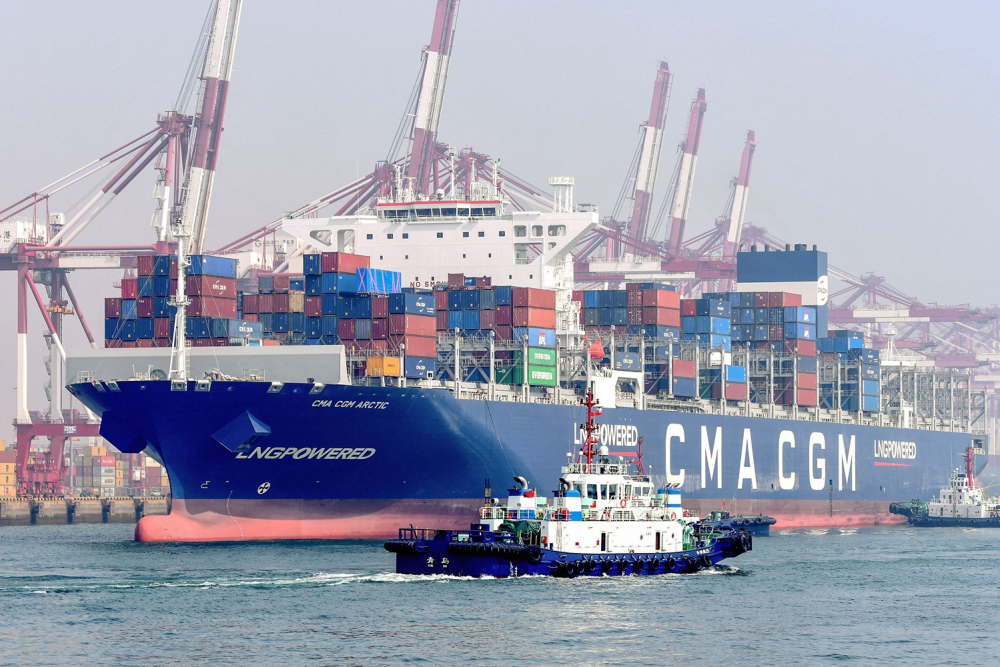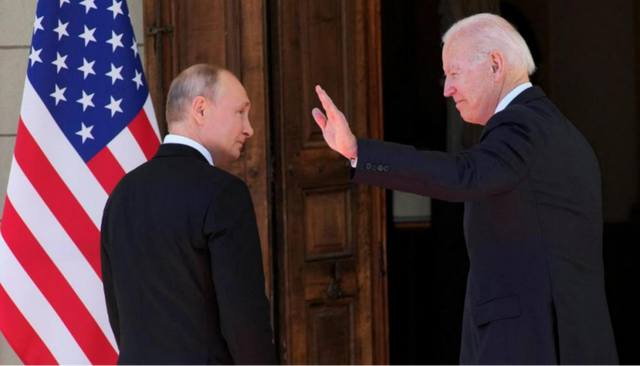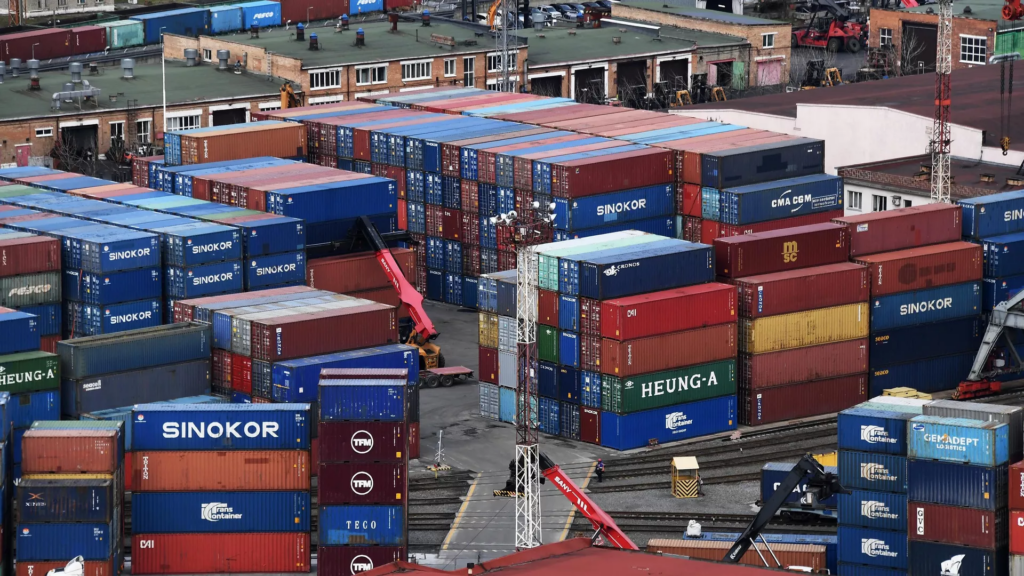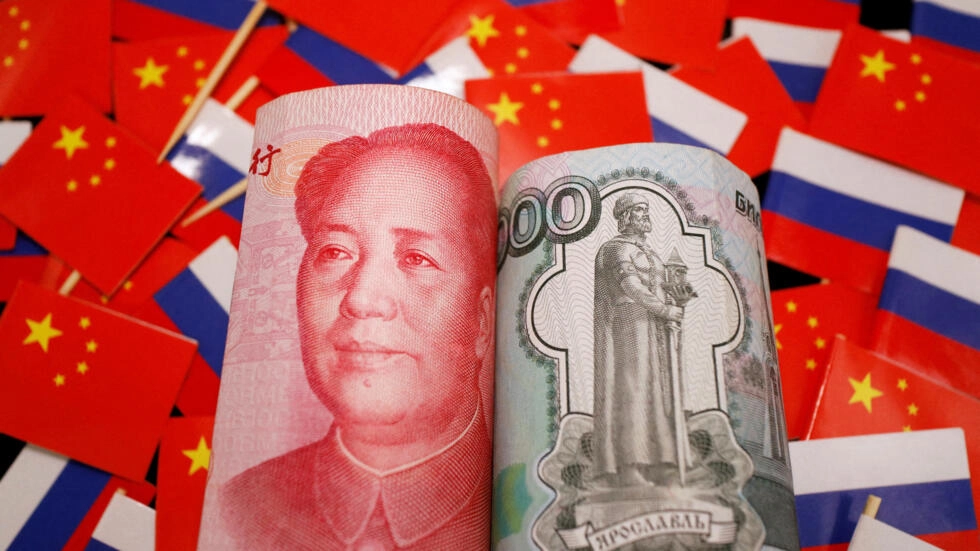Sino-Russia Trade Landscape Under the Russia-Ukraine War
Recent Sino-Russia Trade Data
The General Administration of Customs of China released statistics on March 7 showing that the total Sino-Russia trade volume exceeded $37 billion from January to February 2024, an increase of 9.3% year-on-year. The statistics indicate that the total import and export volume between China and Russia for January-February was $37.103 billion, up 9.3% year-on-year. Specifically, China’s exports to Russia were $16.8079 billion, up 12.5% year-on-year; China’s imports from Russia were $20.2024 billion, up 6.7% year-on-year. Russian and Chinese leaders had previously set a target to double the trade volume from $100 billion in 2018 to $200 billion by 2024. Data from the Chinese customs authorities shows that in 2023, the trade volume between China and Russia was $240.11 billion, an increase of 26.3%. China’s exports to Russia increased by 46.9% to approximately $110.97 billion; Russian imports of goods increased by 12.7% to $129.14 billion.
Regarding the 2024 Sino-Russia trade, Ostroukhovskiy, Chief Researcher and PhD in Economics at the Contemporary China Research Center of the Institute of Oriental Studies of the Russian Academy of Sciences, is very optimistic. He told the media that the trade volume between China and Russia in 2024 could reach $400 billion, or even $500 billion.
According to him, the growth rate of Sino-Russia trade in 2024 will be greater than that of 2023. From 2022 to 2023, it increased by only about $50 billion, indicating significant growth potential in trade cooperation between the two countries.

In terms of China’s exports to Russia, industrial products mainly replace market shares previously held by Europe and the US. In this regard, automobiles, construction machinery, processing machinery, various instruments, and electronic products have performed very well. Everyone is familiar with these. In the automobile sector alone, Russia sold 1.0587 million new cars in 2023, with Chinese cars accounting for 51% of the market share, compared to only 19% in 2022 and 7% in 2021. In terms of import share, China accounts for 76.1%.
On the Russian side, the focus will mainly be on energy, grain, timber, fishery products, and livestock products. Despite the variety of Russian export categories, energy remains the major sector with significant expansion potential.
Both coal and oil production this year have exceeded 100 million tons. According to the Russian Ministry of Energy’s forecast, coal production in 2024 will not increase significantly compared to 2023, so China’s import growth in this area is not expected to be substantial.
Oil could be the biggest growth point. China imported over 100 million tons of oil from Russia this year, an increase of about 15 million tons compared to 2022. Russia initially wanted to increase exports to India to ease European sanctions pressure, making China the most stable importer.
However, due to recent factors such as settlement and pressure from Europe and the US, India’s imports seem to have slowed down, with increased imports from the Middle East and the US, which means more will be shipped to China.
In terms of natural gas, Russia expects to increase liquefied natural gas production to 100 million tons per year by 2030, mainly targeting the Asia-Pacific region. The “Power of Siberia” pipeline continues to increase its capacity, and multiple Russian LNG projects will gradually start production, which are excellent growth points.
For example, Novatek’s “Arctic LNG 1” and “Arctic LNG 2” projects alone will produce 6.6 million tons each and will gradually start production in 2024.
In terms of grain, timber, fishery products, and livestock products, the current import volume is relatively small, but many Russian companies received export permits to China last year. Explosive growth is expected this year.
Transaction risks: Sanctions Policy against Russia
Despite the above data, there also exist many risks in Sino-Russia trade. Since the outbreak of the Russia-Ukraine conflict, the United States has swiftly introduced a series of sanctions against Russia, including placing relevant individuals or entities on the SDN list, banning investment, restricting U.S. dollar settlement, removing many Russian banks from the SWIFT system, and constantly adding prohibited exports to Russia, among other punitive measures. The European Union and the United Kingdom have adopted similar policies.
Sanctions policies have left both Russian and Chinese businesses puzzled about many issues. Let’s discuss the risks of sanctions upfront.
What Sanctions Are?
- International Sanctions: These are imposed by the United Nations Security Council and are binding on all UN member states. The UN implements these sanctions, and so far, sanctions have been imposed on over twenty countries or terrorist organizations, with 14 ongoing sanctions currently.
- National Sanctions: These are unilateral or multilateral economic sanctions imposed by some countries against others. International law has no provisions for this, nor is there any supervisory mechanism. Do sanctions imposed by a country’s laws bind the citizens or legal entities of other countries?
Generally, a country’s laws apply within its territory and are binding on its citizens and legal entities; this is jurisdiction.

Types of sanctions currently imposed by the West on Russia and their main impact on foreign trade.
- Personal Sanctions: Target individuals who can influence Russia’s political or economic decisions. In reality, sanctions affect all Russian citizens.
- Financial Sanctions: Over $300 billion of Russia’s assets are frozen, and the Russian banking system faces restrictions. Debt repayment accounts for foreign bond issues are also frozen.
Let’s delve into the situation where Russia’s banking settlement system is sanctioned. Chinese businesses and investors are likely concerned about settlement issues with Russian business partners.
Nine Russian banks (Vnesheconombank, Sberbank, Development Bank, NOVIKOM Bank, Promsvyazbank, Sovcombank, VEB, Trade and Investment Bank, and TRANSCAPITAL Bank) are on the SDN list, facing the highest level of sanctions. Their USD assets and correspondent accounts are frozen. Seven of these banks have been removed from the SWIFT system.
The SDN list, “Specially Designated Nationals and Blocked Persons List,” is published by the U.S. Department of the Treasury’s Office of Foreign Assets Control (OFAC). Banks on this list have their U.S. assets frozen, and U.S. citizens are prohibited from conducting USD settlements with them. This means these banks can’t conduct foreign business in USD. Being removed from SWIFT extends settlement times from minutes to 2-10 days. However, within Russia, these banks continue to operate normally, and VISA and MASTERCARD’s exit has no impact on Russia’s domestic payment system.
Some banks face limited sanction impacts; their USD and EUR correspondent accounts are closed, but they can still conduct settlements in other currencies.
Apart from the listed banks, other Russian banks are not affected by sanctions. Especially the Gazprombank, as a key energy settlement channel for Russia, any sanctions against it would affect certain economic sectors in Europe and the U.S.
The third type of sanction, industry sanctions, has the most significant impact on Russia’s economy, restricting the import or export of specific goods, projects, or services. For instance, the U.S. bans exports to Russia of equipment for oil and gas extraction, machine tools, industrial robots, communication equipment, and more. However, this has significantly accelerated the pace of domestic import substitution.
In response to industry sanctions, Russia has implemented a series of counter-sanction measures and published an “unfriendly countries” list. Within months of the Russia-Ukraine conflict erupting, nearly 300 foreign companies announced their exit from Russia. Although these companies’ operations are not within the scope of sanctions, due to political trends and expectations of sanctions, many European and American companies took this step. To prevent these companies from shutting down, the Russian government implemented emergency measures: externally managed those where the decision-making layer exited and allowed foreign exits only through special accounts settled in rubles, enhancing forex control.
Russia relaxed intellectual property protection requirements for entities from unfriendly countries, allowing specific products to continue production under foreign brands. There are now Russian court precedents dismissing IP protection claims from these entities.
Russia has imposed export bans or restrictions on certain products like wheat, rye, corn, sugar crops, etc. Some products can be exported based on approved quotas from the Ministry of Industry and Trade, which remains effective until Western sanctions on Russian merchant ships are lifted.
Russia issued a presidential decree listing “unfriendly countries”. Entities from these countries are prohibited from moving assets abroad, have restricted forex operations, and must settle energy purchases in rubles. Some products can be parallel-imported into Russia by these entities.
I’d like to highlight the parallel import policy. Due to political influences, “unfriendly country” companies voluntarily exited the Russian market, but their products are not sanctioned. In this scenario, these companies will likely increase their market share in other countries to compensate for losses in Russia, like increasing sales in other markets. After Russia allowed parallel imports, foreign companies can resell some products to Russia since manufacturers rarely restrict downstream resale, such as cars and car parts, household appliances, etc.
The main trade issues caused by the Russia-Ukraine war
Logistics Issues
The impact on logistics is significant. Recently, the Russian Minister of Transport also stated that Western sanctions have completely interrupted Russia’s logistics, forcing Russia to redesign its logistics system. This is the current reality in Russia. Our businesses and friends with logistics needs can clearly feel that logistics is now the biggest and most challenging issue affecting Sino-Russian economic and trade cooperation, especially the movement of goods. From my perspective, this problem is unlikely to be resolved in the short term. Most of Russia’s ports are closed, Russian ships can’t reach the West, and large Western companies’ ships are not coming to Russia. Transport tools are gone, ports are gone, and a large volume of goods, which used to have significant maritime traffic, are now halted. Even the China-Europe Railway Express is affected, with a shortage of containers and issues with railway lines. As many know, Russia’s railways were mostly built a century ago and can’t meet the sudden surge in logistics demand. Russian airspace is also closed to the West, and their own planes can’t fly out. Even cargo planes dare not fly. The reason is well known: once Russian planes fly to unfriendly countries, they risk being seized. This is because planes leased from the West to Russia, due to sanctions, are not being returned. So, as soon as Russian planes fly out, they get impounded. The result is that air freight is gone, maritime transport is greatly affected, and land and railway transport is affected by port clearance capacity, car numbers, and other factors. Therefore, the logistics issue needs urgent attention. Not only logistics but general mail routes are also heavily affected, including the exchange of some documents. Even if I don’t need to ship goods, I might still need to send some documents, like contracts and legal papers from our lawyers, which now face significant delays with no guarantee of delivery time.
I believe that the logistics problems caused by sanctions can be resolved. Once the sanctions are lifted, logistics companies will return, and ports and air travel between the two sides will resume, solving these logistical issues. However, given the current situation, Russia is unlikely to yield, and the West is unlikely to relent. As long as this struggle continues, the logistics issue may remain unresolved. Therefore, every entrepreneur planning trade and investment with Russia should first consider the potential impact of logistics problems.

Payment Issues
Payment is also a major issue. Everyone is aware of the SWIFT issue. If Russian banks are removed from the SWIFT system, you can’t settle with Chinese companies using USD or EUR. The biggest problem is how banks can navigate this in practice. If a Russian company is a sanctioned entity, or its bank is a sanctioned bank, you can’t conduct payment transactions with them. If they send you money, you won’t receive it, and vice versa. This is certain. However, the key issue is that only a few Russian banks are kicked out of the SWIFT system or face sanctions, while most banks can still operate. But the sanctioned banks are the major banks in Russia. After a few are removed, 70%-80% of the entire Russian payment system might be excluded, leaving only smaller banks. Many companies engaged in international trade with Chinese firms are clients of these major banks, so when their banks face payment restrictions, it becomes problematic. In this situation, what we advocate for now is using the CIPS system and RMB payments. But this requires a process. Companies need to open RMB accounts in Chinese banks or Russian banks that can open RMB accounts, and then make payments in RMB. The problem is that this takes a long time. They need to open accounts, the Chinese banks need to open accounts for them, and customer reviews need to be conducted. Transferring funds to an RMB account also takes time. We also need to consider the pressure from sanctions, which not only affects the Russian side but also might impact the Chinese side. The extent to which our RMB system can function or be allowed to function might depend on time and changes in the global landscape. Therefore, I think we still need to pay attention. Although payment issues persist, there are still channels to resolve them.
Sanction Restriction Issue
The restrictions mainly target raw material products and Western chips or electromechanical equipment. These items are strictly not allowed to be sold to Russia, regardless of the buyer. This is currently the biggest issue affecting trade and something Russians are looking to China to solve. This also applies to parallel imports; they are trying to address these issues. They are eager to know if some products can be purchased from a third country and then imported into Russia through friendly nations. Many Chinese businesses hope to bypass sanctions through this method. Everyone is trying to figure out how to make this work and it needs to be addressed on a case-by-case basis.
Some Good Aspects of the Sino-Russia Trade under the War
Russian Countermeasures
These countermeasures primarily target Chinese companies. Specifically, Russia has adopted some countermeasures to cope with Western sanctions. Personally, I believe this presents many opportunities for Chinese companies amid the crisis, and we can use these opportunities to expand our economic and trade cooperation with Russia.
Mandatory Foreign Exchange Settlements are Gradually Being Relaxed.
Previously, settlements were required within 30 days, but now it’s extended to 60 days. If there are import and export contracts, there’s no need to settle. Restrictions on withdrawing foreign exchange cash and overseas remittances are also being eased. Regarding exchange rates, in the current situation, as Russia is gradually decoupling from the world, it’s hard to determine whether its currency is overvalued or undervalued. Such assessments are meaningless, similar to the Soviet era when one dollar could only be exchanged for 40 kopecks. Only when Russia’s economy integrates into international trade can its exchange rate truly reflect its economic development level. The risks involved are considerable, so one shouldn’t just see a strong ruble as a positive sign; future risks are gradually accumulating.
Prepayment Restrictions are Only Applicable to Service Trade.
Russian companies buying goods don’t face prepayment restrictions. However, when purchasing services like legal, accounting, consulting, or licensing rights, there’s a 30% prepayment limit. I believe this is Russia’s way to limit capital outflows and prevent illegal businesses from transferring funds using service trade contracts.
Other Measures Beneficial to Trade with Russia
Russia has also introduced a series of measures to encourage imports. These include simplifying certification processes, extending tariff payment deadlines, and offering preferential tax rates. For e-commerce shopping, the tax-free threshold has been raised from 250 euros to 1000 euros. This is good news for cross-border e-commerce, allowing more products to be sold to Russia, which has significant demand in this area.
Recently, Russia has implemented a tax-free policy for the import of technical equipment. However, there are two points to note:
This tax exemption is conditional.
Firstly, the equipment must be listed as part of a priority investment project.
Secondly, the so-called priority investment project must be registered with the Ministry of Economic Development of Russia.
Only under these conditions can the equipment enjoy tax-free status. If not, the tax exemption cannot be applied. As of now, there’s no final list detailing which projects are eligible, so we must wait for this list. Only investments and technical equipment listed on this approved list will be eligible for tax exemptions.
Common FAQs
How can one determine if a trading partner with Russia has been sanctioned? How can one find this information? What should be done about credit if a small Russian bank is sanctioned?
Whether a bank can make transfers or has been removed from SWIFT can be checked. Any sanctions against a Russian company or an oligarch can be found on Russian websites. If you find that the person or company’s controlling stake or the companies they control are sanctioned, you should not proceed with the deal.
However, Russia has a unique situation. In China, if A controls B, there must be legal documents, whether it’s through shareholding or an agreement, to bind the two. These documents can be public or presented in court. In Russia, A might control B without any documents or shareholding. Even in this situation, B might not be considered a controlled enterprise and, in principle, can still engage in business. However, there is still a risk of being sanctioned in such cases. Russia’s situation is unique, so one should proceed with caution.
At the current stage, what opportunities and prospects are there for Russian majors?
At least at the moment, China’s political and economic relations with Russia are very good, providing a vast market opportunity. For Russian language majors or those studying law related to Russia, I think it’s a good opportunity. Personally, I believe there is a broad prospect; it’s a major trend.
If one wants to work in this field, mastering both language and law is essential. Using only language or only law is challenging. Additionally, gaining some specialized knowledge might be beneficial.
If exporting civilian equipment to Russia that uses European or American navigation technology, and these components are listed by the U.S. Department of Commerce but not for military use, how can Chinese export companies avoid U.S. sanctions?
Whether for military, civilian, or dual-use, if the components contain parts exported from the U.S., they cannot be exported. Exporting them would definitely violate U.S. regulations and carry a risk of sanctions.
After the outbreak of tensions between Russia and Ukraine, some goods from a company were inspected at a transit port. Due to exceeding a week in storage, the storage fees are extremely high, resulting in many additional costs. Do you have any suggestions or solutions for these extra costs?
This might not be an isolated case. A friend told me their goods stayed at a European port for two to three months and couldn’t be returned or shipped to Russia. In such situations, the responsibility needs to be determined. If it’s genuinely force majeure causing the delay, the storage fees incurred due to the delay should be borne by the cargo owner. If the logistics provider is not at fault and it’s genuinely due to force majeure, you might need to consider either returning the goods with deductions or abandoning them. The situation varies, and it depends on your contract to determine who bears the responsibility for the storage delay. If it’s on your end, you may need to consider either abandoning the goods or returning them.
A company has signed a contract with Russia where the Russian owner agreed to calculate the contract in RMB but wants to pay in Rubles. With current foreign exchange controls, how can the Chinese company ensure exchanging Rubles to RMB without significant exchange rate losses and then transfer the funds from the Russian account to the Chinese account?
Foreign exchange clauses are commonly used. If the final payment is in RMB, you must ensure the other party has an RMB account. Without an RMB account, the money cannot be transferred. Neither party will bear the exchange rate risk. Whether you or I bear it, or we agree on an exchange rate period, it’s challenging to set such a period. Thus, the exchange rate risk is basically unavoidable. According to Russian law, exchange rate risk is a commercial risk, not force majeure, and it’s challenging to consider it as a change in circumstances. You’ll have to bear it. Only when the exchange rate exceeds 50% might you consider invoking a change in circumstances to amend the contract; otherwise, it’s unlikely. So, it’s challenging to address exchange rate risks in a clause from a legal perspective. I suggest considering other solutions.






